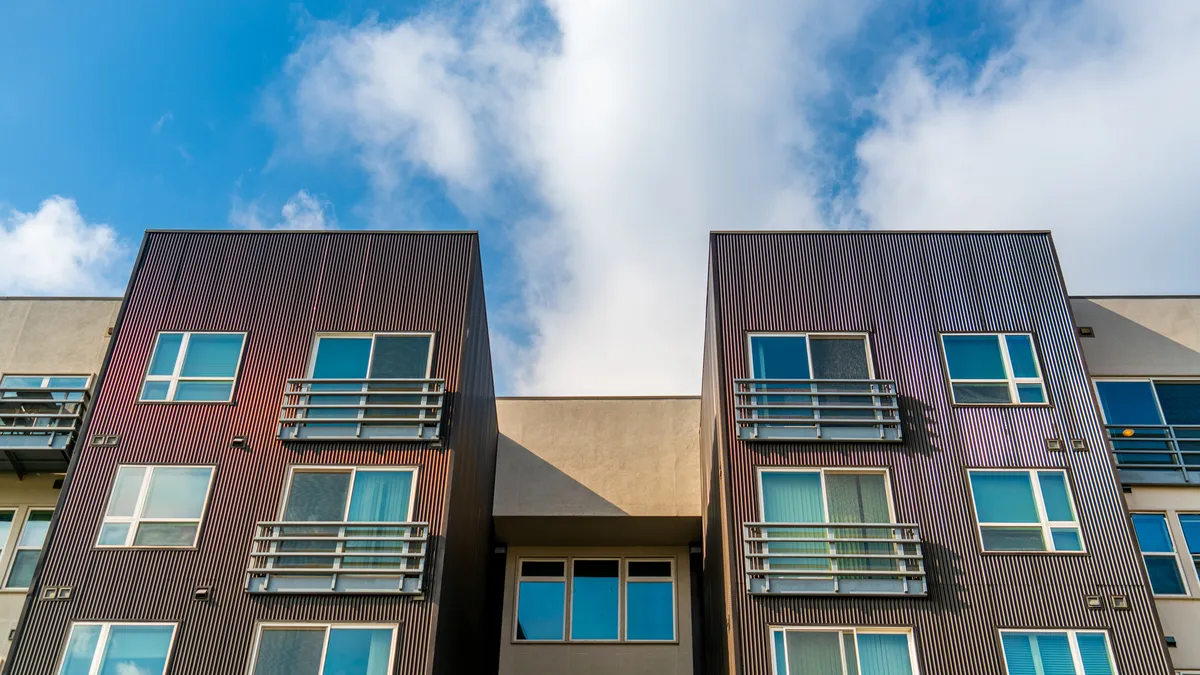Although every year is different, executives at Camden Property Trust generally expects rental growth of 3% on average over 12 months. But 2024 looks more challenging for the REIT, which has a foothold in the supply-soaked Sun Belt metros.
“We think demand is still incredibly strong, but we are cognitive of the supply issues, and that's why you're coming up with a 1.4% [rent growth] for the full year,” said CFO Alex Jessett on the Houston-based REIT’s fourth quarter 2023 earnings call earlier this month.
CEO Ric Campo expects 2024 apartment absorption to be a little over 400,000 units nationwide, with more than 200,000 units absorbed in Camden's markets. The company thinks 50,000 to 70,000 of these new units will compete with its existing portfolio.
“2024 should be a transition year from peak new apartment deliveries to a more constructive market after supply is absorbed,” Campo said.
Here are three other takeaways from the REIT’s call and earnings report:
Taking share from single-family
Typically, when demand is strong in rental housing, it’s boosted by robust job growth. Though the surprising January labor report showing that employers added more than 350,000 roles certainly provides a tailwind for rental housing, Campo highlighted other factors that will help his company fill units this year.
“When you think about what’s really driving demand in 2024 and 2025, we don't think it was increased job growth driving that demand,” Campo said. “What's been happening is multifamily has been taking market share from single-family.”
From 2011 through 2019, apartments received 20% of household formation, according to Campo. However, he said the multifamily market share will jump to 40% between 2024 and 2026.
“This is because home affordability is at a 20-year low with rising home prices and current interest rates, and no signs of the pressure easing anytime soon, even with rates continuing to fall,” Campo said.
In addition, single renters living alone constitute 30% of households as people continue to move to the Sun Belt. “In-migration to Camden markets continues to grow,” Campo said. “More young adults are in the workforce with solid job growth and wage growth.”
Southern California remains strong
In 2024, Camden expects property revenues to fall between 0.5% to 2.5% in most of its markets. San Diego; Orange County and Inland Empire in California; Southeast Florida; Washington, D.C.; Los Angeles; Houston and Charlotte should have stronger performance, contributing revenue growth between 2% and 4%.
While falling bad debt rates should help in Southern California, other factors are also at play. “LA and Orange County will also see a manageable level of supply this year, which should also serve as a benefit,” said Camden President Keith Oden on the call. “Our Houston portfolio had steady growth during 2023 and should continue to perform well in 2024.”
BY THE NUMBERS
| Category | Q3 | YOY Change |
| Property revenue | $311.1 million | 2.6% |
| Net operating income | $202.9 million | 0% |
| Operating expenses | $108.1 million | 7.7% |
| Funds from operations | $1.72 | -1.15% |
| Occupancy rate | 94.9% | -90 bps |
SOURCE: Camden
Denver; Tampa, Florida; Atlanta; Raleigh, North Carolina; and Phoenix should contribute between 1% and 2% revenue growth for Camden. Its remaining four markets — Dallas, Orlando, Florida; Nashville, Tennessee; and Austin, Texas — are expected to have revenue growth of plus or minus 1%.
Campo pinpointed Austin and Nashville as the most difficult. “There, the concessions are significant — anywhere from two to three months free,” he said. “Generally, merchant builders don't go beyond three months free, but you're seeing that in the most supplied markets.”
Development and acquisitions
Camden’s 2024 guidance assumes a relatively modest $250 million in acquisitions, offset by an additional $250 million in dispositions. But, Camden needs to see some changes in the market before it starts buying.
“The primary thing that would have to happen on acquisitions is we have to see better going-in yields,” Oden said. “Even though transaction volumes are way down, there's still a huge bid-ask spread between buyers and sellers.”
The REIT remains ready for when the sales market opens up. Eventually, those acquisition opportunities could come in the form of newly built properties, according to Oden. “Our working assumption — and what's reflected in the guidance — is that we're willing to be pretty aggressive when we see value in acquisitions, but not before then,” Oden said.
Camden expects up to $300 million of development starts in Charlotte in the second half of the year. “They’re suburban, three-story walk-up type product,” Campo said. “And we would start those, depending on how the year unfolds, in the back half of the year so that we could deliver into ‘26 and ‘27.”
Click here to sign up to receive multifamily and apartment news like this article in your inbox every weekday.







































